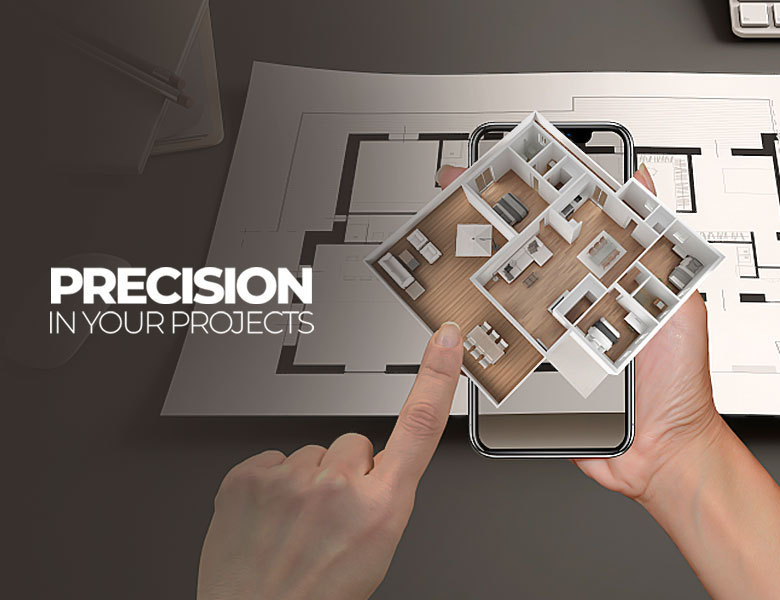
5 civil construction trends for the coming years
Civil construction, as we know it today, dates back to the Renaissance, when new methods, systems and materials were developed by specialists in engineering and architecture. However, the history of great constructions acquired since the dawn of humanity, when man took advantage of the resources at his disposal to build residences and monuments.
With the passage of time and technological advances, more and more tools have emerged capable of accelerating and facilitating the civil construction process. Each year, professionals in the area can observe new trends that guarantee speed, economy and quality in each work.
Professionals such as civil engineers, architects and builders must be selected whenever they are aware of market innovations and trends. This not only helps to deliver more with less and improve the quality of processes and end product, it also reduces costs and places ahead of the competition.
In this content we mention 5 trends for civil construction for the coming years that everyone should follow! Check out!
Which are the 5 civil construction trends for the coming years?
#1. Use of Applications and Programs
We have already talked about automation in various market sectors, especially in industries and communications, but this is also a reality for civil construction. With simulation technology and augmented reality, the trend is that more and more processes are automated and carried out through applications and programs.
Calculations and projections, applications and tests, all of this can be solved without the professionals even having to be in the space where the work takes place. Remote monitoring makes the process faster and much cheaper, as it eliminates the need for transportation.
Another important point is that new applications and programs do much of the work themselves. This allows engineers, architects and other professionals to devote their time to other tasks such as tracking project results and negotiating with customers and suppliers.
#2. Ecological materials
With the increase in the number of people adept at the movements to protect the environment and animal life, the level of awareness of the population has also increased. Nowadays it is much more common to see people looking for information about the origin and processing of materials before consumption.
Being an eco-friendly product with a responsible product and marketing process has become a decisive purchasing factor. Therefore, industries have invested heavily in research and development of new materials that are vegan, cruelty-free and that do not negatively impact the environment at any stage of production.
Companies that do not fit in will lose customers, in addition to running the risk of canceling their brand in the market. And the environment is not the only issue to be taken into consideration, social responsibility is also a very important point. Civil construction directly impacts the life of the community.
#3. Augmented Reality
The so common models will only be used for school work. For years to come, 3D augmented reality technology will dominate the construction market and transform the customer experience.
That’s because it’s possible to visualize the final result of the work in impressive detail, walk through every inch of the future construction and reorganize the layout repeatedly as many times as necessary, without even having the first brick in hand.
This new trend also allows clients and professionals to be connected from a distance, to visit the predefined work before all the changes, even before climbing the first walls.
The use of drones is also a new trend for a more in-depth study of the terrain and the entire extension of the works, especially in more complex cases where the view of the set of works is hampered by location.
#4. Use of Renewable Energy
Also in the same trend as ecological materials, the use of renewable energies is a constant concern of professionals in the civil construction field. With constant warnings about water scarcity and risks of a water crisis in the coming centuries, there is a growing movement that encourages the use of renewable energy in construction.
Energy sources considered inexhaustible, such as wind, solar and geothermal are part of the future of civil construction. But despite being well considered, they are still not so well explored by professionals in the field. It is necessary to invest in the study and training of the team, in order to position your business as a reference.
#5. Service Outsourcing
Have you ever stopped to think about how costly it is for a company to maintain a team full of experts? For this reason, it has been increasingly common to find large construction companies that work with outsourced professionals, equipment and tools.
This, in addition to being less costly for the company, which negotiates with the professional on each project without a continuous commitment, it also becomes a better option for the client, who will have at their disposal several reference professionals in the market working on their project.
And this can all be done in one place, without the need to look for a professional for each step. Some construction companies and engineering offices provide a list of qualified professionals, whom the client can assess against the portfolio and negotiate the contract.
Did you like our content about the 5 civil construction trends for the coming years? Then read also: What is the importance of the environment in the planning of a construction?







